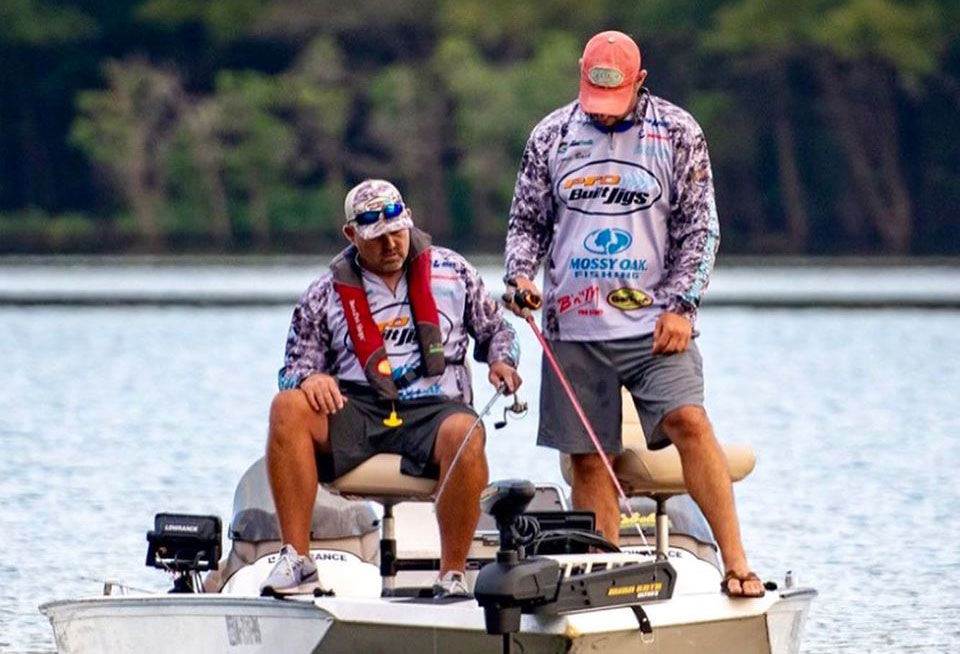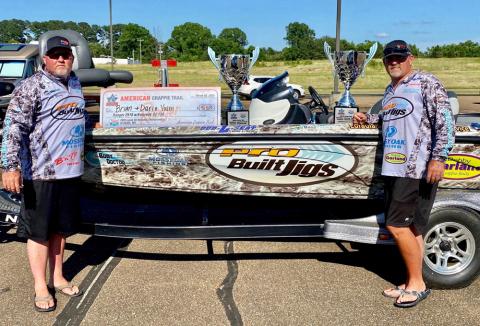Provided by John E. Phillips
What if you could catch crappie that weighed 1-1/2 pounds or better most every time you went fishing? What if you didn’t have to spider rig with four poles per person and only used one pole to catch the biggest crappie in a lake? What if you could use your depth finder to pinpoint the biggest crappie, follow it until the fish stopped and then put your bait right on the crappie’s nose? What if you could tell the difference between a crappie’s head and tail before you ever released your bait? This new technology is some of what has been introduced to the crappie-fishing world recently. Two anglers are forging a new path that other crappie fishermen surely will follow.

Ryan Young explains how he and his brother Darin used imaging to catch crappie at the American Crappie Trail Championship.
We moved into the trees and started looking for crappie on our Garmin Panoptix LiveScope. The fish were holding in-between the trees, with the bigger ones swimming in 13-15 foot deep water. During the tournament, the lake was 7-feet high, meaning that the water had moved into the bushes on the bank. We figured that the big crappie would be there, but we were wrong. So, we searched the flats looking for large schools of shad. But we barely could see the crappie underneath the shad because of how many there were. However, when the schools began to disperse, we could see more crappie than shad. Kevin Rodgers led the tournament and was by our side each day. Not once did he try to catch our fish, and we didn’t try to catch his.
One of the strangest things that happened during this tournament was when a crappie jumped in the boat. On that day, the fish were very energetic. At one point, one of the fish that we tried to catch took the bait on one side of the boat, swam underneath it and jumped right in the middle of the boat before we ever could get the hook out of its mouth.
The real secret to winning this tournament was praying that nothing broke down while transporting to and from the tournament. We also had an advantage over the other contestants because I’d guided 70 crappie trips while spending more than 400 hours studying and learning my LiveScope screen. The pandemic gave me time to hone my skills on the water every day. On many of my trips, the clients weren’t fishing but were instead learning how to use the LiveScope more effectively. Soon enough, they were able to use this technology to catch bigger fish than they’d ever found before.
To get the most out of learning how to navigate the LiveScope, I recommend going out at least three times on different bodies of water to better understand what the LiveScope and the fish are teaching you. If the crappie are holding on structure, you quickly and easily can learn how to detect the bigger crappie from the smaller ones. But, in open water, you’ll have to spend a few more hours searching for those big fish. My brother and I marked a lot of routes that would lead us back to where we thought would be good places to fish in this tournament. We even went out at night to get an advantage over the other contestants because none of them could tell where we were, or what we saw.
If you’d like to learn more about the LiveScope or fish with Ryan Young or see the size of fish he’s catching, you can go to his Facebook page at Eufaula Boy’s Crappie Guide Service, or email him.



























